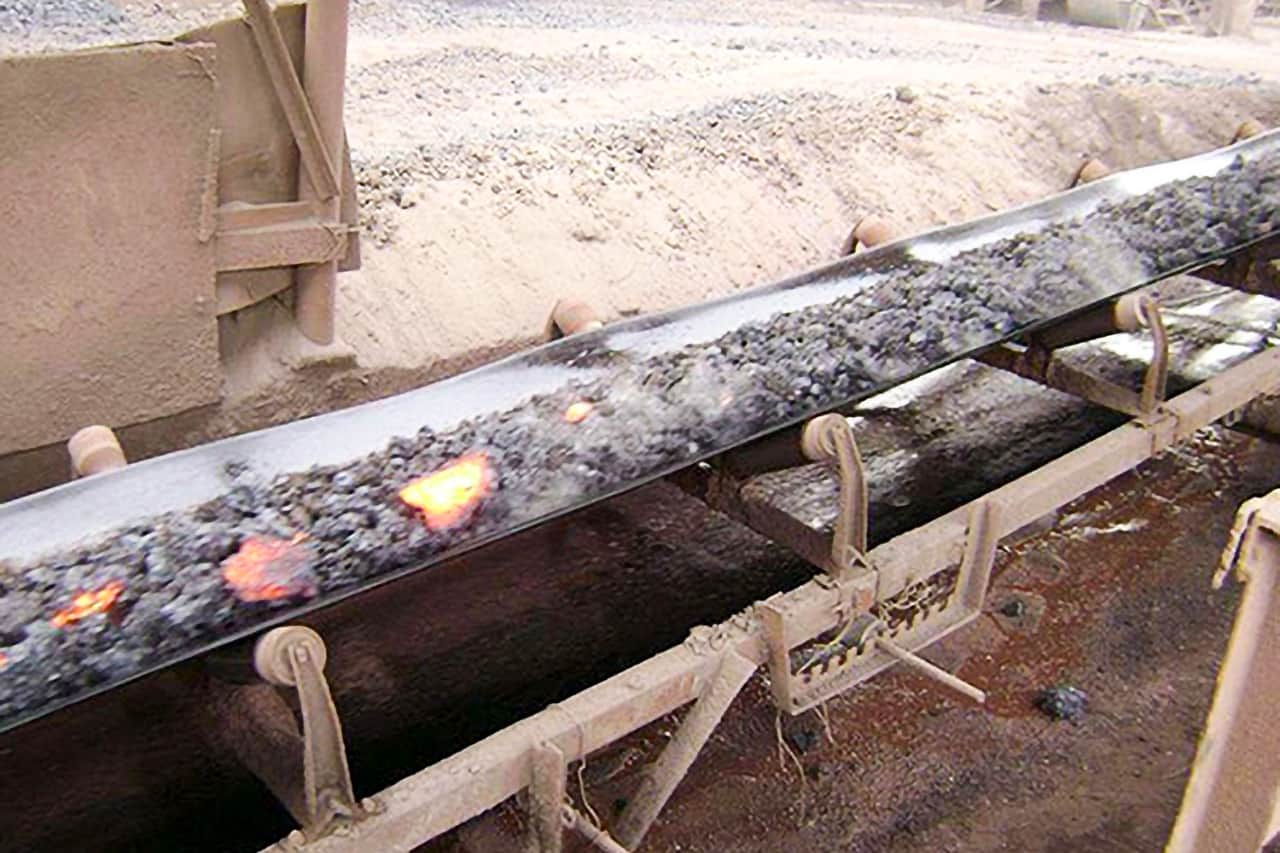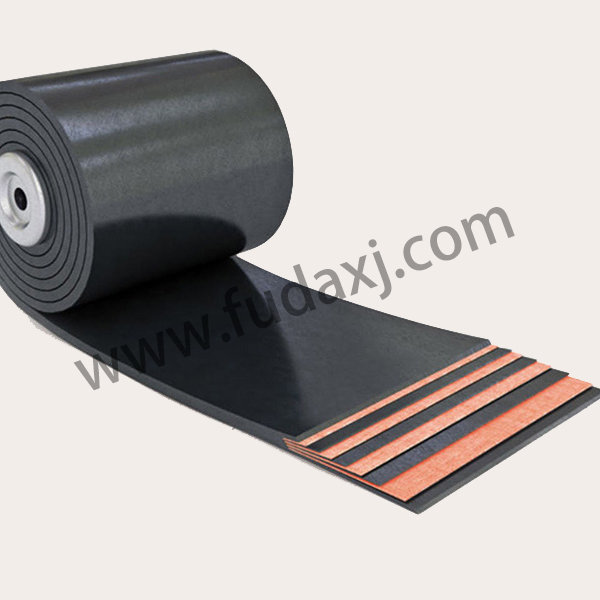
Heat resistant conveyor belt is a kind of heat-resistant conveyor belt. It is made of multi-layer rubber cotton canvas (polyester-cotton cloth) or polyester canvas covered with heat-resistant or heat-resistant rubber and bonded together by high-temperature vulcanization. It is suitable for conveying hot coke, cement, slag, and hot castings below 175 ℃. It is mainly used in metallurgy, construction, and other industries to transport sinter, coke, cement clinker, and other high-temperature materials.
It can be used under the condition that the material temperature does not exceed 800 ℃ and the belt surface temperature does not exceed 220 ℃. Characteristics: EPDM is used as the covering layer, and the frame material is made of domestic special high-temperature resistant canvas. The common formula design solves the key problems of high saturation, poor adhesion, and low adhesion between layers of EPDM. It has the characteristics of a light belt, long service life (about 2-4 times), and good heat resistance.
Heat resistant conveyor belt is composed of multi-layer rubber cotton canvas (polyester-cotton cloth) or polyester canvas covered with high temperature resistant or heat resistant rubber, which is bonded together by high-temperature vulcanization. It is suitable for conveying hot coke, cement, slag, and hot castings below 175 ℃. It is divided into ordinary heat resistant conveyor belt and strong heat resistant conveyor belt. The ordinary heat resistant layer is polyester cotton canvas (cc56), and the strong heat resistant layer is EP (see Fig They are divided into EP100, EP150, ep200, ep250, ep300, ep350, ep400, etc.).
It is mainly used in metallurgy, construction, and other industries to transport sinter, coke, cement clinker, and other high-temperature materials. The material temperature does not exceed 800 ℃, and the belt surface temperature does not exceed 220 ℃. Characteristics: EPDM is used as the covering layer, and the frame material is made of domestic special high-temperature resistant canvas. The common formula design solves the key problems of high saturation, poor adhesion, and low adhesion between layers of EPDM.
 English
English 简体中文
简体中文 Español
Español عرب
عرب
 English
English





 Fax: 0086-576-83019528
Fax: 0086-576-83019528